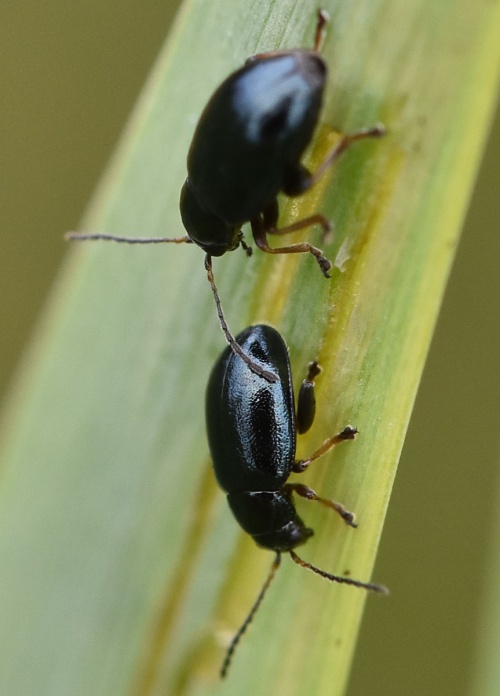Iris Flea Beetle - Aphthona nonstriata
At 2.5 to 3 mm this is the largest member of the genus and this large size coupled with the darkened anterior and intermediate femora (in UK specimens) is usually sufficient to identify the species.
Please provide a photograph and state the host species.
Habitats include anywhere the host, Iris pseudacorus (Yellow Iris), grows in abundance, usually in wetlands but also permanently damp soil in woodlands, parks, gardens etc..
Most likely to be seen from March or April, peaking in abundance from May to July and remaining common into the autumn.
Overwintered adults feed in the spring, consuming strips of epidermis parallel to the leaf margins and leaving conspicuous pale lines, before mating and ovipositing on the host foliage.
Common and often abundant throughout England and Wales, becoming scattered further north and scarce in Scotland although there are plenty of records from the west and Western Isles.
Occasional in Leicestershire and Rutland.
Leicestershire & Rutland Map
Enter a town or village to see local records
MAP KEY:
Yellow squares = NBN records (all known data)
Coloured circles = NatureSpot records: 2020+ | 2015-2019 | pre-2015
UK Map
Species profile
- Common names
- Iris Flea Beetle
- Species group:
- Beetles
- Kingdom:
- Order:
- Family:
- Records on NatureSpot:
- 3
- First record:
- 28/04/2022 (Sexton, Timothy)
- Last record:
- 15/06/2023 (Nicholls, David)
Total records by month
% of records within its species group
10km squares with records
The latest images and records displayed below include those awaiting verification checks so we cannot guarantee that every identification is correct. Once accepted, the record displays a green tick.
In the Latest Records section, click on the header to sort A-Z, and again to sort Z-A. Use the header boxes to filter the list.





